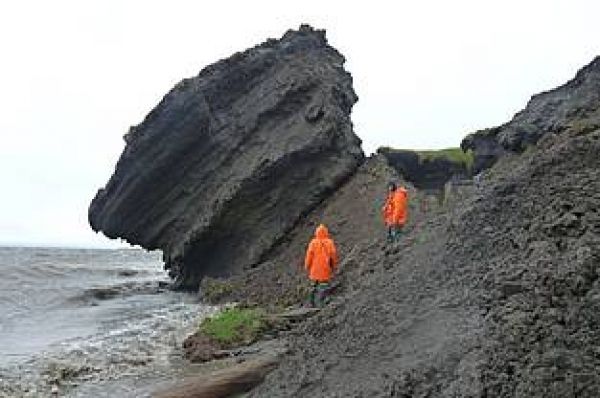The loss of arctic permafrost deposits by coastal erosion could amplify climate warming via the greenhouse effect. A study using sediment samples from the Sea of Okhotsk on the eastern coast of Russia led by AWI researchers revealed that the loss of Arctic permafrost at the end of the last glacial period led to repeated sudden increases in the carbon dioxide concentration in the atmosphere.
Today, the exact magnitude of the future increase in greenhouse gas concentrations remains unknown. This is partly due to the fact that carbon dioxide is not only produced by humans burning gas, coal and oil; it can also find its way into the atmosphere as a result of natural environmental processes. The positive feedback between warming and the release of ever increasing amounts of carbon dioxide from natural sources is a particular threat. In order to enable a better assessment of whether, and how, such developments are possible, climate researchers study records from the past to find evidence of these events.
Researchers from the Alfred Wegener Institute Helmholtz Centre for Polar and Marine Research (AWI) together with colleagues from Copenhagen and Zurich have now found evidence of this phenomenon for the Arctic permafrost regions. As the authors report in the journal Nature Communications, through their investigations along the coast of the Sea of Okhotsk in eastern Russia, they were able to show that several thousand years ago large quantities of carbon dioxide were released from Arctic permafrost – due to a rapid rise of sea level. Permafrost is ground that remains frozen year round down to depths of up to several hundred metres, some since the last glacial period 20,000 years ago or even longer. Like a giant freezer, permafrost soils preserve huge quantities of dead biomass, mainly plant remains. When the permafrost thaws, bacteria start degrading the ancient biomass, and their metabolisms release the greenhouses gases carbon dioxide and methane.
Read more at Alfred Wegener Institute, Helmholtz Centre for Polar and Marine Research
Image: Eroding coastline at a Siberian island (Credit: Guido Grosse)


